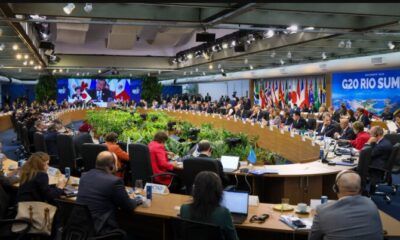The spirited endorsements of three-quarters of the so-called squad illustrates how Mr. Sanders’s campaign has grown from 2016 when it was criticized for being too white, too male and for underestimating the salience of race and gender oppression. Some of that criticism was overstated. Indeed Mr. Sanders won 52 percent of the black millennial vote in 2016 and was supported by Black Lives Matter activists like Erica Garner, who passed away in 2017. But Mr. Sanders took the criticisms seriously anyway.
Much of the media, though, has been stuck in 2016 and has missed the ways that the Sanders campaign has transformed into a tribune of the oppressed and marginalized. We can also measure this change in the endorsement of Philip Agnew, the former head of the Florida-based Dream Defenders and a leader in the Black Lives Matter movement who has become a campaign surrogate. As well as the endorsement of the Center for Popular Democracy Action on Tuesday, a powerful coalition of more than 40 progressive community groups which will now rally their 600,000 members across the country to organize voters in support of Mr. Sanders. These developments defy the caricature of his campaign as impossibly sexist and implicitly racist.
Instead, Mr. Sanders has reached the typically invisible, downwardly mobile working class with his language of “class warfare.” He has tapped into the anger and bitterness coursing through the lives of regular people who have found it increasingly impossible to make ends meet in this grossly unequal society. Without cynicism or the typical racist explanations that blame African-Americans and Latino immigrants for their own financial hardship, Mr. Sanders blames capitalism. His demands for a redistribution of wealth from the top to the rest of society and universal, government-backed programs have resonated with the forgotten residents of the country.
Since Mr. Trump’s election, “class,” when it’s discussed at all, has been invoked for its hazy power to chart Mr. Trump’s rise and potential fall. Recall the endless analyses of poor and working-class white voters shortly after his election and the few examinations of poor and working-class people of color. But the Sanders campaign has become a powerful platform to amplify the experiences of this multiracial contingent.
Under normal circumstances, the multiracial working class is invisible. This has meant its support for Mr. Sanders’s candidacy has been hard to register in the mainstream coverage of the Democratic race. But these voters are crucial to understanding the resilience of the Sanders campaign, which has been fueled by small dollar donations from more than one million people, a feat none of his opponents has matched. Remarkably, he also has at least 130,000 recurring donors, some of whom make monthly contributions.

 Entertainment1 week ago
Entertainment1 week ago
 Tech4 days ago
Tech4 days ago
 Tech4 days ago
Tech4 days ago
 General News2 days ago
General News2 days ago
 Business News1 day ago
Business News1 day ago
 Jobs1 day ago
Jobs1 day ago
 General News2 days ago
General News2 days ago
 Business News1 day ago
Business News1 day ago

